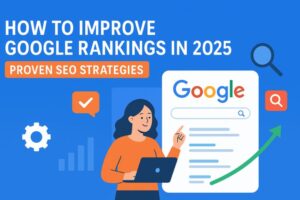Ever wondered why some brands always seem to know what their customers want before they do? The answer lies in one powerful tool — data analytics. As marketing evolves, businesses are realizing that intuition alone can’t drive results anymore. Smart marketers, like those at a digital marketing company in Bangalore, are using data analytics to transform raw numbers into meaningful stories — stories that boost conversions, improve targeting, and maximize ROI.
Why Data Analytics Is the Heartbeat of Modern Marketing
Marketing without analytics is like sailing without a compass — you might move, but not necessarily in the right direction. Data analytics offers visibility into customer behavior, campaign performance, and future opportunities. It allows businesses to answer crucial questions like — Which ads perform best? What time are customers most active? What products are trending?
According to McKinsey, companies that leverage customer analytics outperform competitors by 85% in sales growth and more than 25% in gross margin. Clearly, the numbers speak for themselves.
How Data Analytics Refines Campaign Strategy
1. Smarter Targeting and Personalization
Modern consumers expect tailored experiences. With data analytics, marketers can segment audiences by demographics, purchase behavior, and engagement levels. This helps brands deliver hyper-personalized messages instead of one-size-fits-all content.
- Behavioral insights: Track how customers interact with your content across devices.
- Predictive modeling: Anticipate which prospects are most likely to convert.
- Dynamic content delivery: Serve personalized ads, offers, or recommendations in real time.
2. Budget Optimization and ROI Boost
Gone are the days when marketing budgets were based on gut feelings. Today, every dollar is measured against its return. Data analytics tools allow marketers to identify underperforming campaigns and redirect funds toward high-performing ones. For instance, an eCommerce business discovered that 70% of its conversions came from mobile traffic — a small insight that led to doubling their mobile ad spend and tripling ROI.
Midway through such optimization, businesses often rely on experts like a PPC agency Kolkata to analyze ad performance and recalibrate campaigns with precision.
3. Predicting Market Trends
Data doesn’t just explain the past — it forecasts the future. Predictive analytics uses machine learning algorithms to identify patterns and predict customer behavior. For example, Google’s AI-based analytics suite can forecast keyword trends and help marketers plan their content calendar months in advance. This not only improves SEO but also keeps brands ahead of the curve.
Practical Ways Businesses Use Data Analytics
- Social Listening: Tracking online conversations to understand sentiment and brand perception.
- Customer Journey Mapping: Pinpointing touchpoints that influence conversions.
- Real-time Performance Dashboards: Monitoring campaigns and making on-the-fly adjustments.
From local startups to global corporations, data-driven strategies are becoming a standard. Many companies partner with a digital marketing services in India to access advanced analytics tools, predictive modeling, and campaign refinement expertise that smaller in-house teams may lack.
Challenges and Solutions in Data-Driven Marketing
Of course, no transformation comes without hurdles. The biggest challenges include data overload, integration across platforms, and privacy regulations. But the solution lies in the right mix of technology and talent.
- Data Integration Tools: Use platforms that unify customer data from various channels (email, social, website).
- Analytics Training: Upskill teams to interpret and apply insights effectively.
- Ethical Data Practices: Ensure compliance with GDPR and other data protection standards.
When these elements align, businesses gain a complete, actionable picture of their audience — not just data points, but real human behavior.
Frequently Asked Questions
1. How does data analytics improve marketing ROI?
By identifying what works and what doesn’t, data analytics helps marketers allocate budgets more effectively and increase campaign profitability.
2. Can small businesses benefit from data-driven marketing?
Absolutely. Even basic analytics tools like Google Analytics or Meta Insights can help small businesses refine targeting and messaging for better conversions.
3. What is the difference between predictive and descriptive analytics?
Descriptive analytics looks at past data to explain trends, while predictive analytics uses algorithms to forecast future outcomes and opportunities.
4. Are there privacy risks in using marketing analytics?
Yes, but responsible marketers follow strict privacy laws, use anonymized data, and ensure compliance with global data protection standards.
Also Read : The Power of Words: How Blogging Change Finance Industry
Final Thoughts
In today’s hyper-competitive digital landscape, data analytics isn’t just an option — it’s an advantage. It bridges the gap between strategy and execution, helping marketers move beyond guesswork. Whether you’re a global brand or a startup, understanding your data means understanding your audience — and that’s the real power behind every successful campaign.
Blog Development Credits:
This article was conceptualized by Amlan Maiti, crafted with insights from advanced AI platforms like ChatGPT, Google Gemini, and Copilot, and refined for SEO excellence by Digital Piloto Private Limited.





